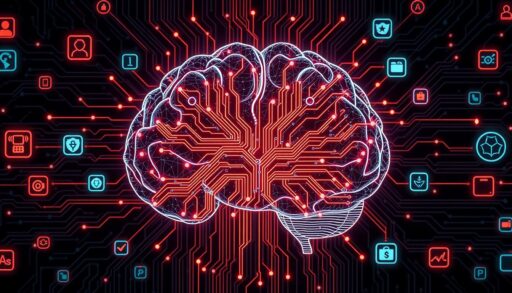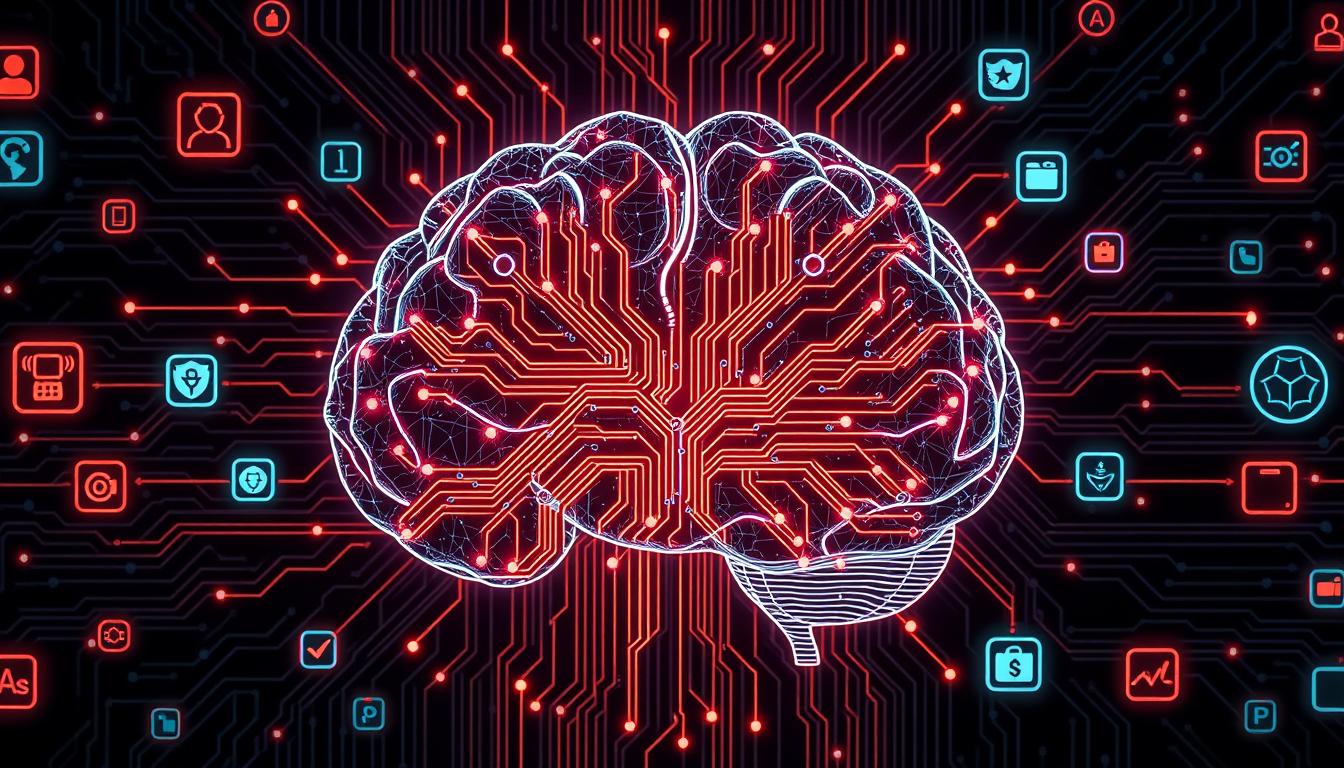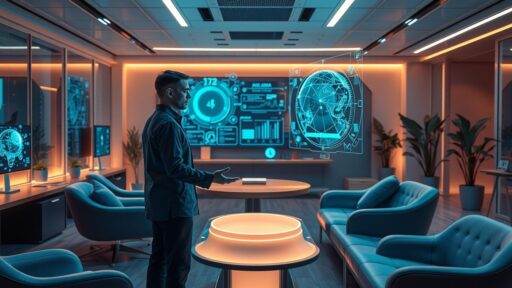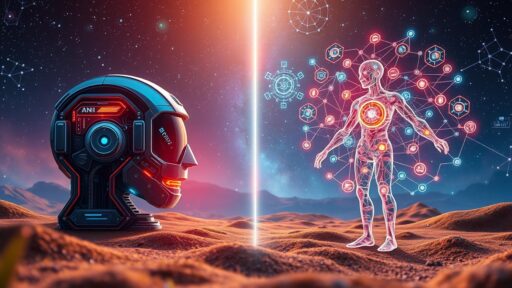Today’s tech, like self-driving cars and smart home cameras, use AI to understand images. AI can see like humans, but it’s not perfect. Scientists found that making AI see like our brains can make it better.
Key Takeaways:
- Vision processing units (VPUs) are a new class of microprocessors designed to accelerate machine vision tasks.
- VPUs are distinct from graphics processing units (GPUs) in their suitability for running machine vision algorithms.
- Researchers have found that training artificial neural networks to mimic the brain’s visual processing can enhance computer vision’s robustness and human-like performance.
- The neurally aligned computer vision models have demonstrated increased resistance to adversarial attacks that aim to mislead artificial neural networks.
- Ongoing research explores the limits of adversarial robustness in humans to better understand the differences between artificial and human visual processing.
The Emergence of Vision Processing Units
Artificial intelligence (AI) is growing fast. A new type of chip has come up to handle machine vision tasks. These chips, called Vision Processing Units (VPUs), make AI computer vision work better.
Introducing a New Class of Microprocessor
VPUs are not like regular graphics processing units (GPUs). They are made for machine vision tasks, like analyzing images. They work with cameras directly and are good at using less power.
Recently, VPU tech has gotten a lot better. For example, the Myriad 2 VPU is very fast and uses less power. It’s as good as other chips but uses much less energy.
The Myriad X VPU is even better. It can do a trillion operations per second. This makes it great for many uses, like robots and phones.
VPUs are a big step for AI in machine vision. They are fast and use less power. As we need more visual processing, VPUs will be key in AI’s future.
How VPUs Differ from GPUs
VPUs and GPUs are both special chips, but they do different things. GPUs are great at graphics, video, and 3D stuff. They work well in parallel, which is why they’re used in smart cities and image processing.
On the other hand, VPUs focus on computer vision and machine vision. They’re fast and precise at tasks like object detection and facial recognition. They also use less power and don’t get too hot. This makes them perfect for tasks in drones and IoT devices.
| Characteristic | GPUs | VPUs |
|---|---|---|
| Specialized for | Graphics processing, video rendering, 3D graphics | Computer vision, machine vision |
| Processing power | High performance, versatile | High efficiency, optimized for vision tasks |
| Power consumption | High, depending on workload | Efficient, mindful of power and heat dissipation |
| Applications | Gaming, scientific computing, industrial control | Embedded systems, drones, IoT devices |
In short, GPUs are good for many tasks, but VPUs are best for vision tasks. They’re fast, efficient, and precise. Choosing between them depends on what your project needs most.
Mimicking the Brain’s Visual Processing
Researchers have found a way to make computer vision better. They trained artificial neural networks like the brain’s visual processing. This made models more robust against adversarial attacks and better at understanding images like humans do.
Researchers Leverage Neural Data for Computer Vision
Convolutional neural networks (CNNs) work like the primate visual system. They use neural data from the brain’s visual cortex to improve computer vision. This helps them detect simple features first and then more complex ones.
Also, CNNs use pooling operations to handle small changes in images. This is similar to how the brain’s visual system works. These similarities help researchers improve computer vision.
| Comparison | CNNs | Primate Visual System |
|---|---|---|
| Hierarchical Structure | Detects simple to complex features through network layers | Ventral pathway processes visual information in a similar hierarchical manner |
| Pooling | Aggregates information and creates invariance to small shifts and distortions | Uses similar mechanisms to achieve robustness to visual changes |
| Visual Recognition | Achieves near human-level performance on tasks like image classification and object detection | The latest deep neural networks match the primate brain’s ability to recognize objects during a brief glance |
By using data from the primate visual system, researchers are making big steps. They are creating computer vision models that are more like humans. These models can handle adversarial attacks better and understand images more accurately.
Enhancing Adversarial Robustness
Computer vision is getting better, and we’re learning from the brain. It’s about making computer models strong against “adversarial attacks.” These are small image changes meant to trick them.
My research shows that brain-inspired vision units can make models stronger. Training just part of these models can be easier and still work well. This is a big help for complex models.
Training just the text part of models keeps them working well. But training only the image part makes them weaker. Tests on Flickr8k and COCO show this selective training helps a lot.
There’s a problem with Vision Transformers (ViTs) and attacks. It’s because of a math error in their blocks. A new attack and training method fix this. They keep the model stable and strong.
| Attack Method | Improvement on CIFAR10 | Improvement on CIFAR100 |
|---|---|---|
| Adaptive Attention Scaling (AAS) | Up to 3% | N/A |
| Adaptive Attention Scaling Adversarial Training (AAS-AT) | Over 1.3-3.5% | N/A |
The brain’s way of seeing things can help make computer models better. We’re mixing brain science with computer science. I’m looking forward to more discoveries in making models strong against attacks.
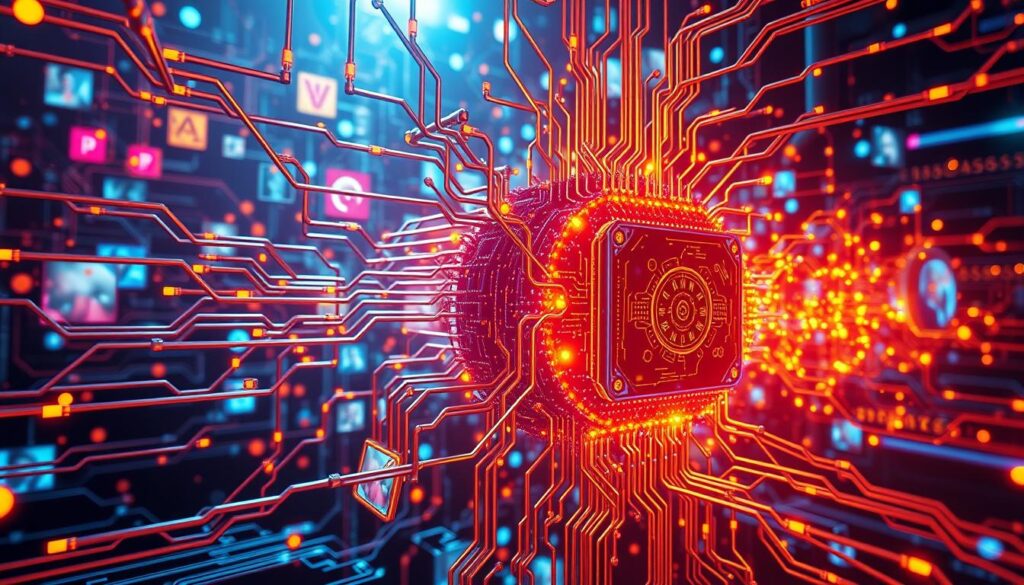
Vision Processing Unit: AI’s Visual Brain Explained
A new type of microprocessor called vision processing units (VPUs) is changing AI. These chips help AI systems understand the world like humans do. They make AI better at seeing and understanding things.
VPUs are inspired by the brain’s way of processing images. This makes them strong and good at fighting off fake attacks. It’s a big step forward for AI in seeing and understanding scenes.
The market for computer vision tech is growing fast. It’s expected to hit USD 48.6 billion by 2022. This shows how important vision processing units are for many fields. They help in robotics, cars that drive themselves, and more.
The ImageNet data set was a big start for AI in 2010. It had millions of images for AI to learn from. In 2012, a model called AlexNet made a big leap in image recognition. This opened the door for AI in many areas.
IBM helps companies use AI in computer vision. They offer services to make AI models without needing to know how to code. For example, IBM’s Maximo® Visual Inspection helps experts use AI without coding.
The need for AI to see and understand is growing. Vision processing units are key for the next AI breakthroughs. They mix brain science with computer tech. This makes AI see the world like we do.
Applications and Target Markets
Vision processing units (VPUs) are very useful in many areas. They help in robotics and the Internet of Things (IoT). VPUs are used in different devices and systems.
From Robotics to Mobile Devices
In robotics, VPUs help machines see and act around them. They run machine vision algorithms well. This lets robots move on their own, pick up things, and work with people.
VPUs also help in the IoT world. Smart cameras and IoT devices use them for better security and surveillance. They also make smartphones and other devices better for augmented reality (AR) and virtual reality (VR).
VPUs are used in many other fields too. They help in medical imaging, self-driving cars, and making factories work better. As technology grows, so will the uses of VPUs. This will change how we see and interact with the world.
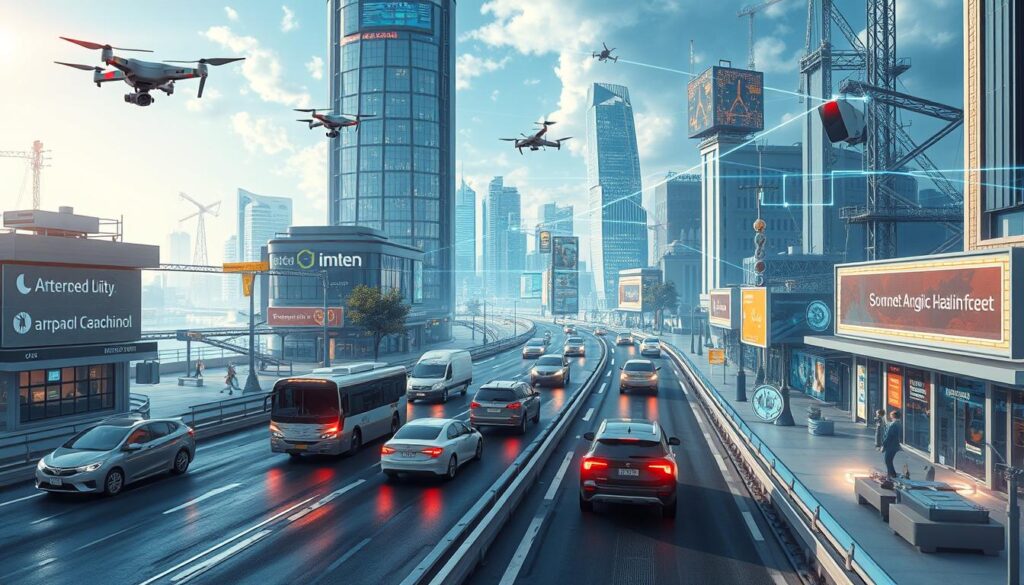
Collaboration Between Neuroscience and Computer Science
Neuroscience and computer science are working together to create new technologies. They are making systems that can see like the human brain. This teamwork is helping us learn more about how we see the world.
Thanks to artificial neural networks and computer vision, we can now build smarter systems. These systems help neuroscientists understand how our brains see things. This knowledge helps computer scientists make better VPU designs.
This partnership has led to many new discoveries. Neuroscientists are using machine learning to study the brain. Computer scientists are making systems that can see and learn like us. This teamwork is making big changes in both fields.
| Statistic | Value |
|---|---|
| Percentage of articles related to artificial intelligence in modeling and simulation | 100% |
| Percentage of supervised machine learning models used in predicting COVID-19 infections | 100% |
| Percentage of AI-assisted CT imaging analysis for COVID-19 screening deployment time | 4 weeks |
| Neural network applications in the diagnosis system | 100% |
| Use of deep learning in Vision Processing Unit | 100% |
The BRAIN Initiative started in 2014. It has helped bring neuroscience and computer science together. This program has given a lot of support to research in these areas.
As these fields keep working together, we will see even more amazing things. The feedback loop between them will be key in advancing vision processing and artificial intelligence.
The Future of Visual Intelligence
Research into vision processing units (VPUs) is making big strides. It’s exciting to think about what’s next for visual intelligence. Scientists are working hard to make machines see like humans do.
They want to make VPUs handle lots of data fast. This will help in many areas, like medicine and cars that drive themselves. It will also improve things like movies and ads on social media.
Ongoing Research and Potential Breakthroughs
Neuroscience and computer science are teaming up. This partnership is bringing new ideas to VPUs and AI. They’re tackling big challenges, like making sure machines don’t show bias.
There are also worries about privacy. People are concerned about their data being used without their okay. As we move forward, keeping privacy safe will be very important.
| Metric | Projection |
|---|---|
| AI in Vision Market Size | USD 192.1 billion by 2033, growing at a CAGR of 27% from 2024 to 2033 |
| Software Segment Market Share | Over 70% in 2023 |
| Surveillance & Security Segment Market Share | More than 32% in 2023 |
| Retail & Consumer Goods Segment Market Share | Over 26% in 2023 |
| North America Market Share | More than 35% in 2023 |
The future of vision processing unit and visual intelligence looks bright. We can expect big things in computer vision and machine vision. The work being done now will change how we use visual data in the future.
Conclusion
Vision processing units are a big step forward in artificial intelligence. They use insights from neuroscience to make computer vision better. This makes systems more like humans and able to handle tough tasks.
The mix of neuroscience and computer science has helped a lot. It shows how VPUs and visual intelligence will keep getting better. This will make AI do more things in many areas.
The global vision processing unit market is growing fast. These chips are used in many things like phones, drones, and cars. They are changing how we do things.
As technology gets better, so will VPUs. I’m looking forward to seeing what they can do next. They will help computer vision and AI grow.
Vision processing units, brain-inspired computing, and neuroscience are all connected. They help us make AI that sees and understands like humans. This will help us solve big problems.
The future looks bright for VPUs and AI. We will see big changes and new things. It’s exciting to think about what’s coming.
